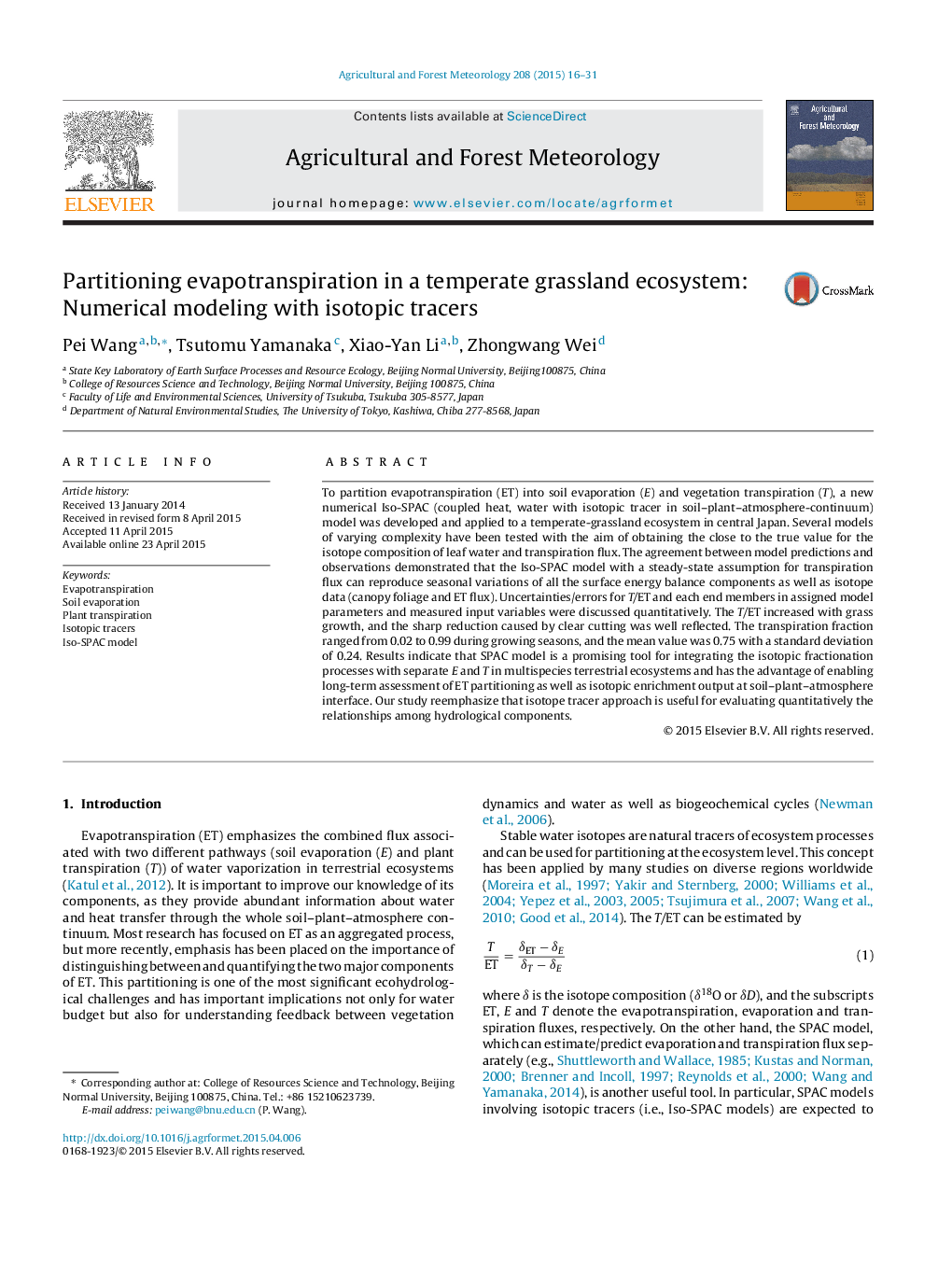| Article ID | Journal | Published Year | Pages | File Type |
|---|---|---|---|---|
| 81589 | Agricultural and Forest Meteorology | 2015 | 16 Pages |
•A new Iso-SPAC model is developed to partition evapotranspiration.•Steady state assumption is a better approximation for estimating δT and δl,b.•10 cm is a reasonable depth for soil water sampling for estimating δE.•Transpiration fraction is relatively insensitive to uncertainties/errors in Iso-SPAC model.•Keeling plot approach was used to evaluate seasonal variations of Iso-SPAC model output.
To partition evapotranspiration (ET) into soil evaporation (E) and vegetation transpiration (T), a new numerical Iso-SPAC (coupled heat, water with isotopic tracer in soil–plant–atmosphere-continuum) model was developed and applied to a temperate-grassland ecosystem in central Japan. Several models of varying complexity have been tested with the aim of obtaining the close to the true value for the isotope composition of leaf water and transpiration flux. The agreement between model predictions and observations demonstrated that the Iso-SPAC model with a steady-state assumption for transpiration flux can reproduce seasonal variations of all the surface energy balance components as well as isotope data (canopy foliage and ET flux). Uncertainties/errors for T/ET and each end members in assigned model parameters and measured input variables were discussed quantitatively. The T/ET increased with grass growth, and the sharp reduction caused by clear cutting was well reflected. The transpiration fraction ranged from 0.02 to 0.99 during growing seasons, and the mean value was 0.75 with a standard deviation of 0.24. Results indicate that SPAC model is a promising tool for integrating the isotopic fractionation processes with separate E and T in multispecies terrestrial ecosystems and has the advantage of enabling long-term assessment of ET partitioning as well as isotopic enrichment output at soil–plant–atmosphere interface. Our study reemphasize that isotope tracer approach is useful for evaluating quantitatively the relationships among hydrological components.
